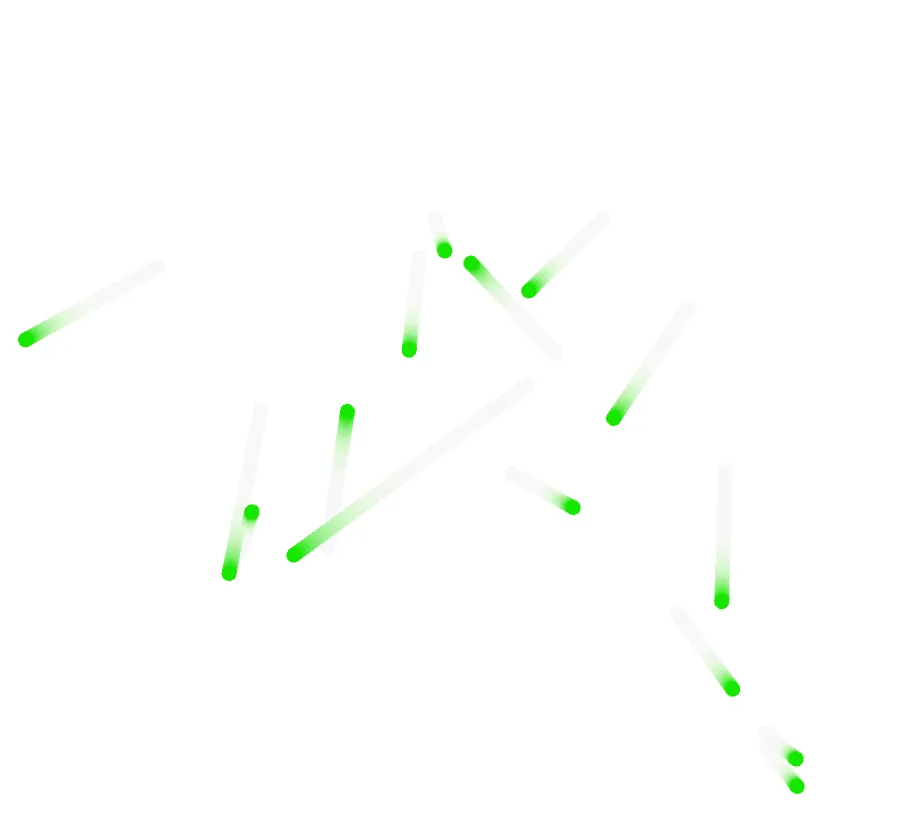我正在尝试生成一张图表,绘制运输路径从起点到终点的连线。我已经将纬度和经度数据转换为适合美国地图上像素坐标(1620, 1080)的形式。
目前的代码按照csv文件中的顺序依次绘制直线。然而,我想要的是让直线从起点开始向外辐射至终点。目前我只能找到已绘制直线的下拉方式。
我认为代码中涉及到的部分是“// Draw Lines”。
目前的代码按照csv文件中的顺序依次绘制直线。然而,我想要的是让直线从起点开始向外辐射至终点。目前我只能找到已绘制直线的下拉方式。
我认为代码中涉及到的部分是“// Draw Lines”。
long current;
int x;
int y;
ArrayList loads;
void setup() {
size(1620, 1080);
background(55);
smooth();
frameRate(15);
// Draw US Map
String[] lines = loadStrings("Map2.csv"); // File containing coordinates to plot US Map
stroke(55);
strokeWeight(1);
smooth();
String[] pieces = split(lines[0], ',');
for ( int i = 0; i < lines.length; i++) {
fill(0);
beginShape();
current = int(pieces[0]);
while ( current == int(pieces[0]) & i < lines.length) {
x = int(pieces[2]);
y = int(pieces[1]);
vertex(x, y);
i++;
if ( i < lines.length) {
pieces = split(lines[i], ',');
}
}
endShape();
}
// Add Lakes to Map
String[] lines2 = loadStrings("Water.csv"); // File containing coordinates to plot great lakes
smooth();
fill(22, 25, 180);
String[] pieces2 = split(lines2[0], ',');
for (int i = 0; i < lines2.length; i++)
{
fill(110);
beginShape();
current = int(pieces2[0]);
while (current == int(pieces2[0]) & i < lines2.length) {
x = int(pieces2[2]);
y = int(pieces2[1]);
vertex(x, y);
i++;
if (i < lines2.length) {
pieces2 = split(lines2[i], ',');
}
}
endShape();
}
// Draw Lines
loads = new ArrayList();
String[] loadset = loadStrings("data1.csv");
for ( int i3 = 0; i3 < loadset.length; i3++) {
String[] loads2 = split(loadset[i3], ',');
loads.add( new Lane(int(loads2[0]), int(loads2[1]), int(loads2[2]), int(loads2[3])) );
}
}
int i=1;
int imax = 1;
int incmult = 1;
void draw() {
if (i < loads.size()-imax){
for(int iadd = 0; iadd < imax; iadd++)
{
Lane Lane = (Lane) loads.get(iadd);
Lane.display();
Lane = (Lane) loads.get(i+iadd);
Lane.display();
}
i +=imax;
}
imax = imax + incmult;
}
class Lane {
int x;
int y;
int x2;
int y2;
Lane( int tempX, int tempY, int tempX2, int tempY2) {
x = tempX;
y = tempY;
x2 = tempX2;
y2 = tempY2;
}
void display() {
int r = 65;
int g = 255;
int b = 35;
strokeWeight(1);
stroke(r, g, b, 55);
line(x, y, x2, y2);
stroke(255, 255, 255); // Origin
fill(255, 255, 255, 55);
ellipse(x, y, 3, 3);
stroke(171, 62, 193); // Destination
fill(171, 62, 193);
ellipse(x2, y2, 3, 3);
}
}
我的data1.csv文件包含四列x,y,x2,y2,其中(x,y)表示起点坐标,(x2,y2)表示终点坐标。
// data.csv
data[0] data[1] data[2] data[3]
929 327 602 507
1335 458 1327 782
1422 325 848 744
1302 280 1118 458
1041 583 1193 666
1267 616 1058 394
1215 671 1351 857
1334 851 1410 946
1334 851 1409 916
828 761 861 653
1386 323 1203 594
1037 293 1013 522
908 869 958 532
1029 331 1053 409
906 357 828 761
. . . .
. . . .
更新 由于我仍然在绘制我所设想的图像时遇到一些困难,因此我已经添加了我的数据链接。
数据1 <"https://docs.google.com/spreadsheets/d/1QzbCGW8H6PZgLkmWN8OyplVNTJhp3tlPGxR_Zv6lttM/pub?output=csv">



1334 851就是这样。如果数据集有更多从此位置出发的目的地,它将会有汇聚到该位置的线路,这正是您想要的吗?我也想绘制这些数据。如果可以的话,您能否发布一个包含完整数据的pastebin(或类似)链接?谢谢。 - George Profenza